Optional standard property blocks are the same as normal standard property blocks (you can predefine them, create picklists, use them in cross tables, …) with the difference that they are only shown on an object’s detail view when you have explicitly selected them.
Optional blocks are very useful when you have a set of properties that are relevant for a specific set of objects only (e.g. for a set of floor finish elements or a particular group of spaces). In this article, we’ll explain how to work with these optional blocks.
Creating optional blocks
Creating optional blocks works in the same way as creating other standard property blocks, via the settings menu. The only difference is that you have to check the box Optional block in the pop-up.
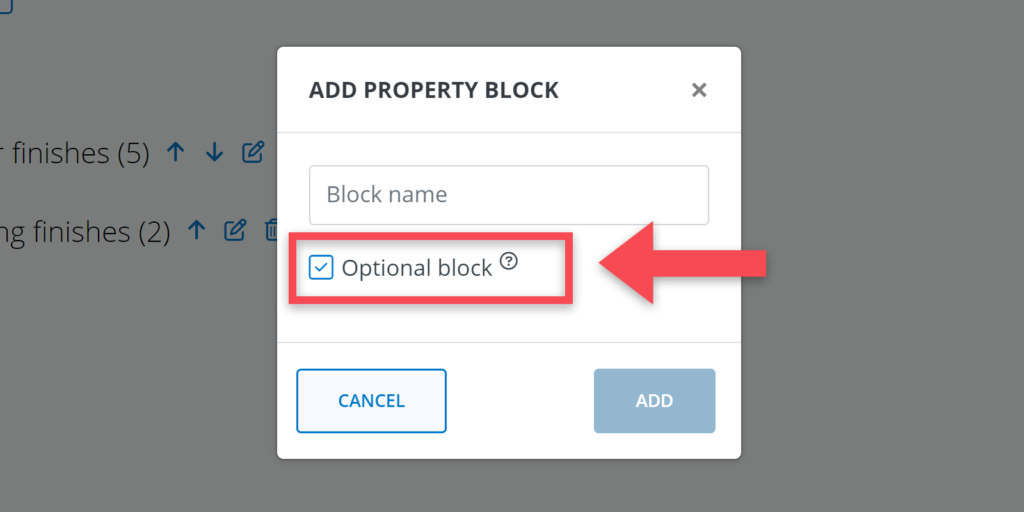
In short, you have to do the following:
- Go to Settings > Requirements > Standard properties.
- .Click on Add block
- Give the block a name and check the box Optional block.
- Create the properties you need by clicking on Add standard property .
For a more detailed explanation about defining standard properties, read the standard properties article.
Adding optional blocks to objects
To add an optional block to an object, you have to go the object’s detail view, where you have to do the following:
(1) Go to the property icon () in the upper right corner of the detail view.
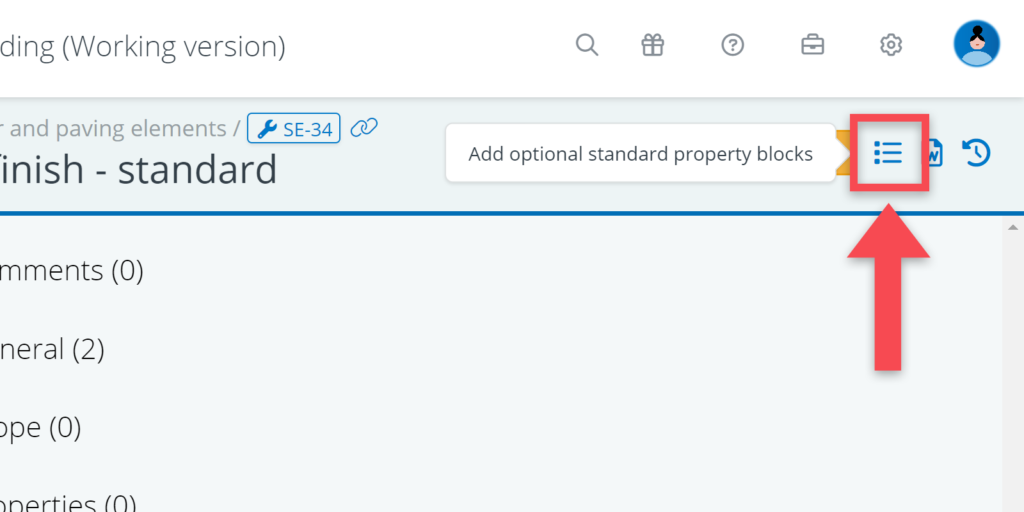
(2) Select the relevant optional blocks and click on Add.
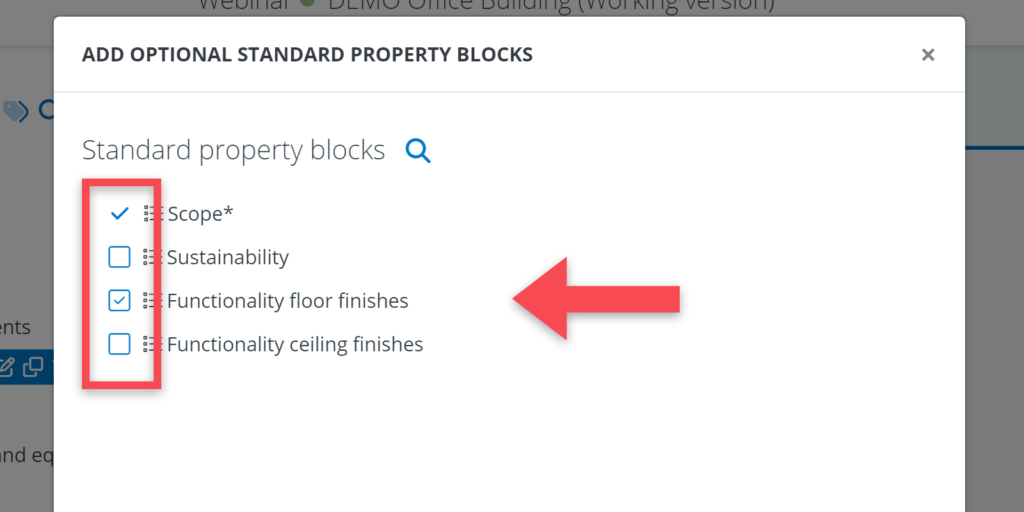
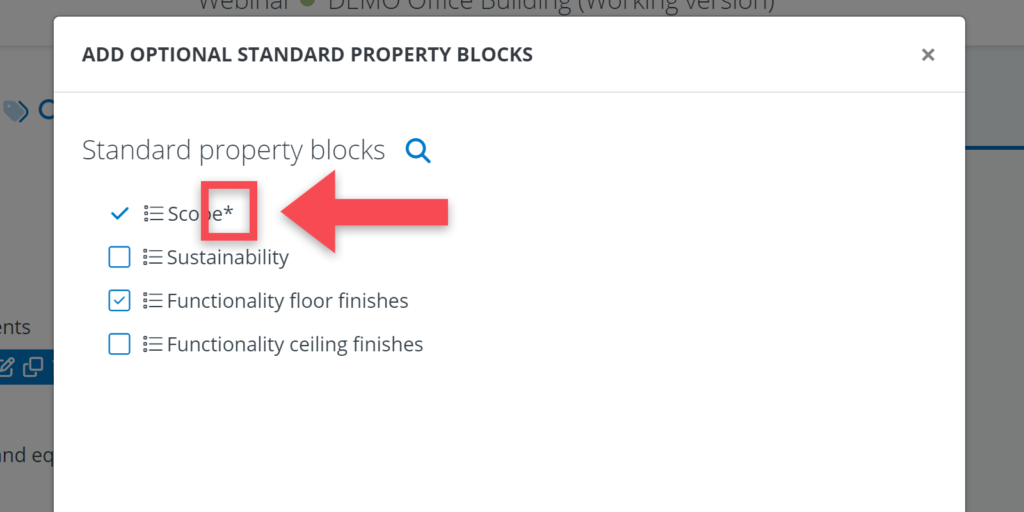
Removing optional blocks from a detail view
If you want to remove an optional block from an object’s detail view, you have to go the relevant block and click on the recycle bin icon ().
Removing an optional block will remove all property values in this block for this object and all related analysis and verification information.
When removing a block from a typical object, the block will also be removed from all it’s instances. All values in the block will be removed for the typical object, and for all instances which do not have deviating values, the block will be removed as well. Non-deviating values on the instances will be removed for this specific block.
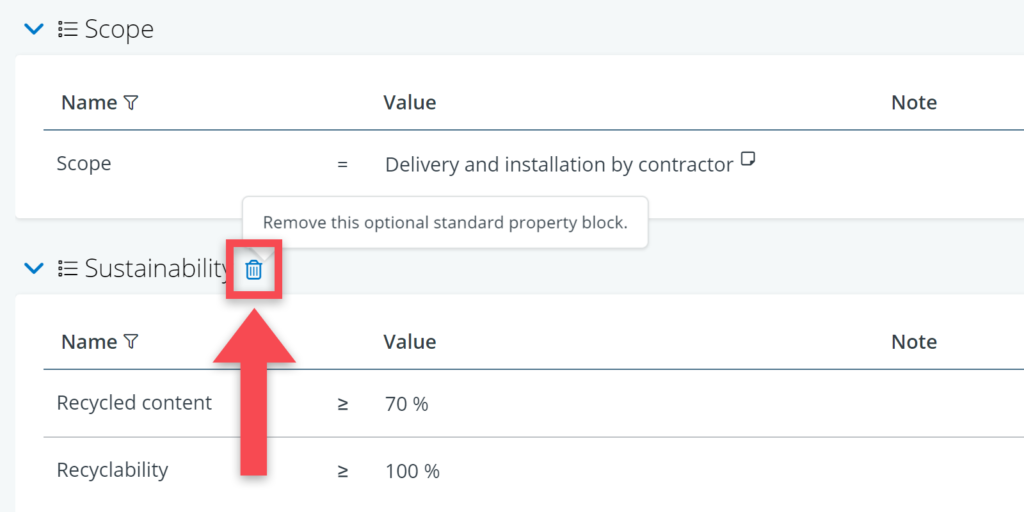
Making default blocks optional or vice versa
When you have an optional block that you want to turn into a default block (= a block that is automatically linked to all objects of that type, e.g. all spaces, all elements, etc.), you have to do the following:
(1) Go to Settings > Requirements > Standard properties.
(2) For the relevant block click on the Edit icon ()
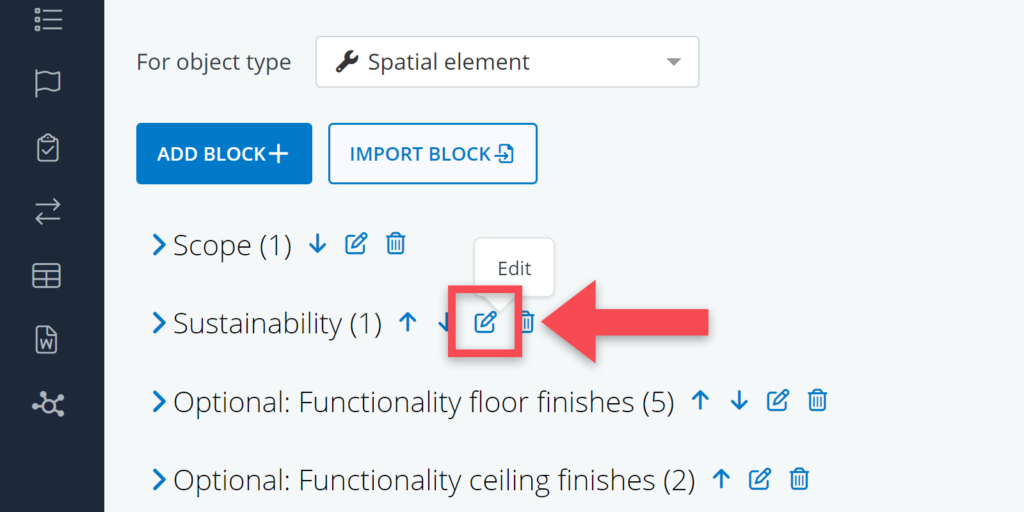
(3) In the pop-up, uncheck the box Optional block and click on Save.
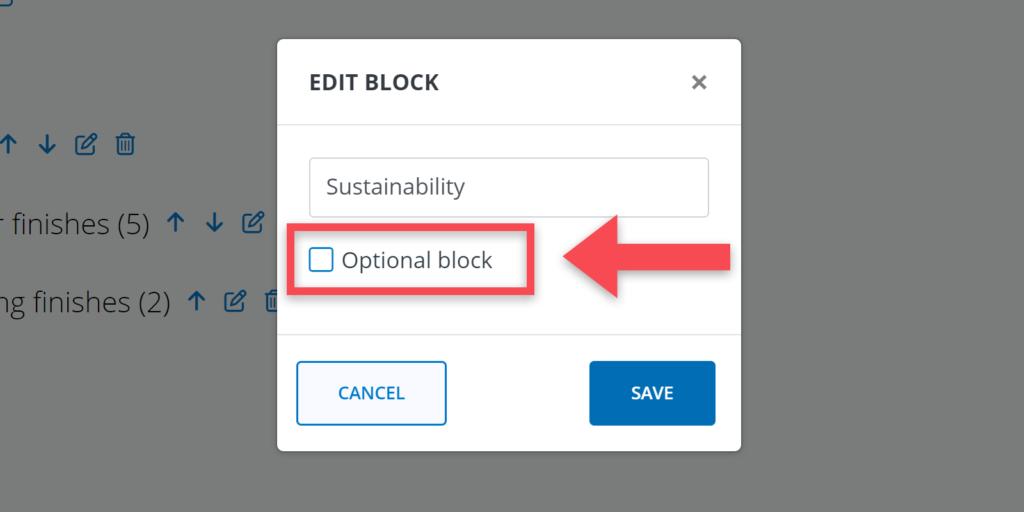
If you want to turn a default block into an optional block, you do the opposite (checking the box Optional block).
